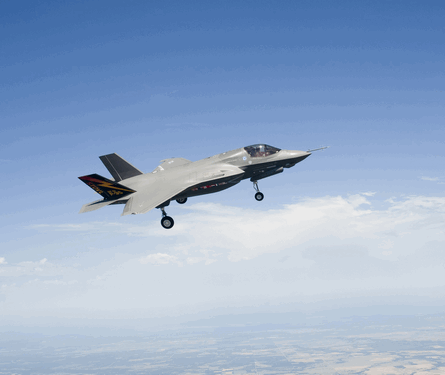First flight for the short-take-off/vertical-landing and weight-optimised Lockheed Martin F-35B Joint Strike Fighter arrived nearly on schedule on 11 June, but deliveries of the next 17 developmental jets will be delayed three to five months.
The debut, half-hour flight by the first F-35B - named BF-1 - fulfilled a commitment made in late 2006 by Lockheed to demonstrate a production-representative aircraft within 18 months. A nagging engine problem with blade fatigue delayed the first flight by 19 days, but programme officials hailed the event as a major success.
Doug Pearson, Lockheed's vice-president for the F-35B's integrated test force, told reporters: "I've never seen [a first flight] predicted 18 months ahead of time and then taken place on that date."
 |
|---|
© Lockheed Martin |
BF-1, however, will be the last development aircraft to arrive on time, according to a new manufacturing schedule adopted within the past two weeks.
The programme's third major schedule revision shifts delivery dates for all flight-test and ground-test aircraft by roughly three to five months, says Dan Crowley, Lockheed's executive vice-president and general manager for the F-35.
The new schedule - internally designated 6.1 - only delays the manufacturing schedule for developmental aircraft. The schedule for low-rate initial production and the flight-test phase is now more compressed, but remains unchanged.
Meanwhile, the programme is seeking to offset the increased schedule pressure after the development phase by merging the schedules for operational and development testing. The flight-test aircraft are also expected to be cycled faster and more frequently than previous fighters, due to enhanced diagnostic technology and more robust systems.
Source: Flight International



















